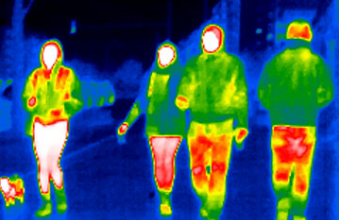Dolphins use distinctive whistles for their young.

Dolphins Do people change their voices when speaking to young children? Most parents, consciously or not, tend to use a higher-pitched voice, a broader vocal range, and shorter sentences when communicating with their infants or young kids. This pattern, termed child-directed communication or motherese, aids in fostering bonds between children and parents and facilitates the development of children’s speech. However, do other animal species employ special vocalizations for their offspring?
READ: “Alan Wake 2’s Epic Games Store Achievements Pose Its Biggest Nightmare”
Scientists have discovered that certain songbirds, small monkeys, and bats alter their vocalizations when around their young. Yet, it remains unclear whether these animals modify their vocal patterns subtly, as humans do, or if they use entirely distinct vocal patterns. It’s akin to questioning whether they are singing the same song in a different key or singing an entirely different song altogether.
Dolphins
An international team of biologists recently investigated whether bottlenose dolphins utilize motherese when communicating with their offspring. The choice of dolphins was based on their high intelligence and their ability to interact and communicate in ways that resemble human behavior. Notably, researchers have demonstrated that each dolphin has its unique “name” in the form of an individually distinctive signature whistle, which aids dolphins in recognizing one another. Given that motherese fosters bonding and language learning in human children, the scientists hypothesized that dolphins might employ a similar strategy with their calves.
The team gathered data from the Sarasota Dolphin Whistle Database, which contains nearly four decades of whistle recordings from the bottlenose dolphin community in Sarasota Bay, Florida. These recordings were made by briefly encircling up to four dolphins in a net and attaching a hydrophone, an underwater sound recording device, to each dolphin’s forehead to capture their signature whistles.
To investigate whether mother dolphins modify their signature whistles when near their calves, the researchers analyzed recordings of 19 adult female dolphins. For each mother dolphin, they compared 20 whistles recorded with her calf to 20 whistles recorded without the calf. The calves were approximately 2 years old on average, ranging from 1 to 9 years old.
Using a spectrogram, a type of sound analyzer, the researchers measured the pitch, or frequency, of each whistle. Vocal frequency indicates how fast or slow the dolphins’ vocal cords vibrate, affecting the pitch of their whistles. Similar to guitar strings, thicker strings vibrate more slowly, producing lower-pitched sounds, while thinner strings vibrate more rapidly, producing higher-pitched sounds.
The study revealed that every dolphin mother in the research produced signature whistles with maximum frequencies about 2 kHz higher when with their calves than when without them. This difference is equivalent to ascending three octaves on a piano, from middle C to high C, although the frequencies are too high for humans to discern. The researchers also observed that the dolphin mothers used a wider range of frequencies with their calves, akin to human communication patterns with their offspring. Interestingly, the mother dolphins altered their whistles in this manner regardless of their age, the age of their calf, the presence of other dolphins, or their prior experience with being captured.
Additionally, the team analyzed the number of repeated whistle patterns, or whistle loops, made by the dolphins, akin to repeating a melody. They discovered that dolphin mothers did not alter the length or number of whistle loops produced with their calves, in contrast to human behavior where adults tend to use shorter sentences when speaking to children. The researchers suggested that whistle loops might not be a part of dolphin motherese, as not all dolphins create signature whistles with multiple loops.
The researchers confirmed that bottlenose dolphins employ a form of motherese when communicating with their offspring, although the exact purpose remains unknown. They proposed that dolphin mothers might use this communication style to teach their calves their individual signature whistles, although calves typically develop their signature whistles within their first few months, indicating that teaching alone may not be the sole purpose.
It is possible that dolphins continue to use motherese with older calves to facilitate the learning of other whistle types and vocal sounds, to maintain communication in large social groups, or to foster bonding, similar to how humans bond with their young. Alternatively, differences in dolphin whistles could be a by-product of other physiological changes that occur during the process of parenting, such as lactation.
The team concluded that dolphins modify their child-directed communication in a manner more akin to humans than other previously studied animals. However, they were unable to determine whether dolphins can adapt their whistle patterns as swiftly as humans can, depending on the individual they are communicating with at any given moment. The researchers suggested that future studies should investigate the flexibility of dolphin motherese and whether calves demonstrate a preference for this type of vocalization, akin to the preferences observed in human children.




